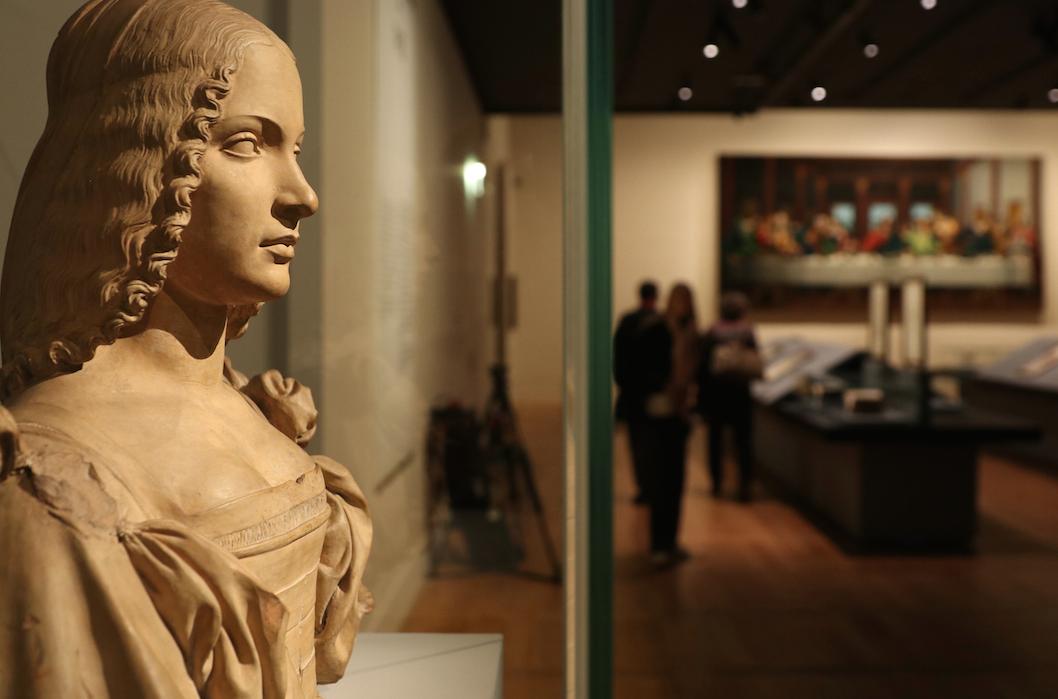Now disappeared, the Etruscans have left a cultural legacy, which influenced ancient Rome. The Etruscan people, composed of merchants and traders, settled on a fertile land rich in resources; they established their power not by force, but through social and economic means.
In a new exhibition, the Musée Maillol (Maillol Museum) in Paris presents the daily life of the Etruscans, unveiling a cosmopolitan and culturally rich civilization in which women played a role as important as men’s, which is an exception among ancient civilizations.
Because its origins remained an enigma, and has only been known for its funerary culture, the richness of the Etruscan culture was long ignored. However, archaeological excavations of the last few decades reveal new surprising aspects of this mysterious people coming from the Middle East.
The Maillol Museum traces the history of the Etruscans from their settlement in the Italian Peninsula in the ninth century B.C. with 250 objects coming from European museums and institutions, in particular from those in Italy.
Etruria, a Trading Center
Very early on, the Etruscan civilization opened itself to commercial and cultural exchange, and villages grouped themselves into cities. In the sixth century B.C., the Etruscans followed the Greek model and establish city-states as well as a federation of 12 nations.
Nevertheless, each nation kept its singularity, which was recognized in the creation of different forms of art: stone sculptures from Vulci, terracotta from the temple of Orvieto, and paintings in the Tarquinia caves. This separatist spirit certainly contributed to their common destiny: their fall and replacement by the Romans.
The Etruscans left behind a cultural heritage that influenced ancient Rome.
That the Etruscans settled on the Mediterranean coast resulted in imports of both products of art and of the best artisans of the time, coming from Greece and the Mediterranean orient. Etruscan art benefits from these influences in its production of clay and ceramics.
Precious Objects
Among Etruscan favorites were Greek ceramics. Imported in massive amounts, they were used to decorate houses as well as tombs. Among these, Attic ceramics were often black and shiny adorned with red figures or vice-versa. Depicting erotic scenes or scenes from mythology and signed by the best contemporary painters, they doubtlessly constituted the most impressive collections. Attic ceramics were used for serving food and drink at symposiums that concluded banquets.
Gold and silver fine jewelry that belonged to Etruscan aristocrats—clasps, earrings, brooches, and necklaces inlaid with stones and amber—are also a feast for the eyes. Ornamentation was often a sign of power and prosperity.
Writing
Inspired by the Greek alphabet, the first inscriptions are dated 700 B.C. Used in the aristocratic world, they described ownership of goods. Therefore, women, having access to writing, could sign property deeds. With urban development and the construction of temples, sacred inscriptions and divination textbooks could be found among Etruscan ruins.
Though the Etruscan alphabet has been deciphered, the syntax remains an enigma. In 1964, golden leaves found at the archaeological excavations at the temples of Pyrgi gave hope of resolving the mystery at last. One of the leaves was inscribed in Phoenician, but to researchers’ disappointment, the texts were not identical.
Homes of the Living and the Dead
The first Etruscans lived in log cabins with a covering of soil on the Italian Peninsula. We know this from cinerary urns of the eighth century B.C. These illustrations show their affirmed taste for decoration, with roofs covered in ornaments, and painted walls.
In the seventh century B.C., the Etruscan domus makes its appearance, characterized by brick foundations, tile roofs, and for the wealthy, terracotta statuettes decorated in bright colors, and clay friezes or terracotta plaques depicting notables’ lives.
With the beginnings of urbanism, public buildings were also built with just as much decoration. In effect, the temples of the sixth and fifth centuries B.C. exhibit the most extraordinary decorations—antefixes in the shape of female heads, satyrs, Silenus, as well as magnificent high reliefs.
The sumptuous art and jewelry found in tombs reflect the Etruscan way of life. Magnificent frescoes, statues, tableware, and furniture used for open air banquets all testify to a dynamic and open society.
The exhibit Etruscans, A Hymn to Life, shows at the Musée Maillol in Paris until Feb. 9. en.museemaillol.com





